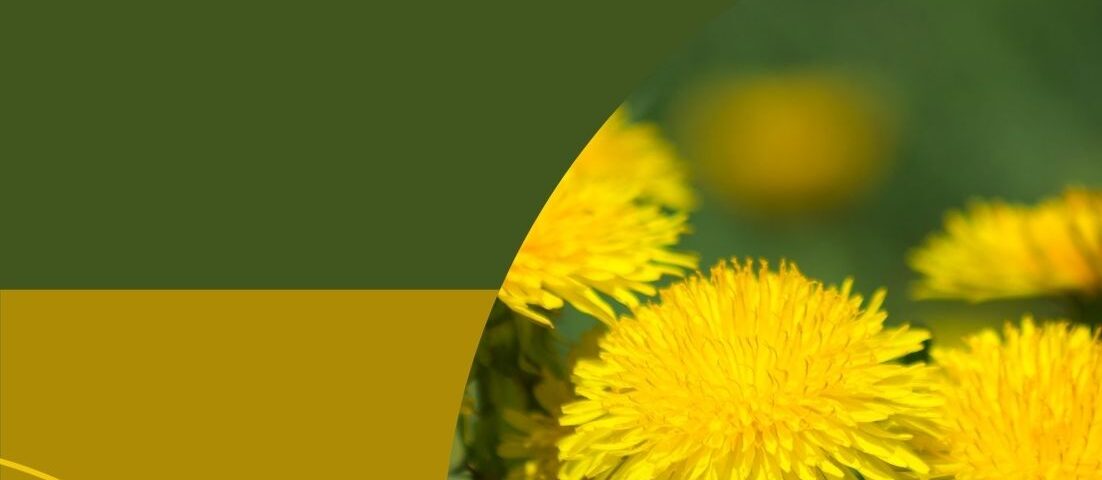Written by Bernie Carr
Every spring I see dandelions popping up on roadsides, nature trails, in the middle of lawns and gardens. A lot of people spray them with weed killer but don’t be so hasty about getting rid of them. Dandelions have a lot of great uses as well as medicinal benefits.
What are dandelions?
Dandelions are often considered pesky weeds with the bright yellow flowers. Dandelions are common in Europe as well as North America. It turns out, that these much maligned “weeds” are actually good for you. Every part of the plant – roots, leaves, and flowers is edible.
Picking dandelions
If you pick up dandelions for consuming, make sure you choose plants that have not been sprayed with herbicides or weed killer. You’d also want to pick the ones that are “off the beaten path” away from vehicle exhaust, and dog walkers (you definitely don’t want the ones in walkways that pets often do their business on!)
Health benefits
Nutrients:
Dandelion greens contain vitamins A, B1, B2, B6, C, E, and K, folic acid, calcium, iron, magnesium, manganese, potassium, and zinc. They also contain protein and fiber.
Diuretic:
One of the common uses for dandelion roots, leaves, and flowers is as a diuretic.
Digestive aid:
Another use is to help with digestion; it is also a mild laxative.
Precautions:
Before taking any herbal remedies, check with your doctor to make sure it’s right for you. Moderation is key. According the National Center for Complementary and Integrative Health (NCCIH), using dandelion in the amounts commonly found in food is generally considered safe, however, less is known about the safety of taking it in larger amounts.
Some people are allergic to dandelion; allergic reactions may be more likely in people who are allergic to related plants such as ragweed, chrysanthemums, marigolds, and daisies.
Now that you know how to choose dandelions and what to watch out for, let’s discuss the uses.
Coffee Substitute
During the civil war, Confederate soldiers used a variety of substitutes for coffee, as their supply lines were broken and unreliable. One substitute was dandelion. They roasted the dandelion root and the result was a mild coffee-like drink. Of course, it does not contain caffeine, but the warm, tasty beverage provided comfort and energy to the soldiers.
Today, it is worthwhile to learn how to make dandelion coffee, as dandelions are plentiful in many area. In case of hard times, it is always good to learn to make do with product alternatives.
Here is a video that will show you how to make dandelion coffee.
Salad and greens
Dandelion leaves can be eaten raw in a salad: mix 1/2 pound dandelion greens, some red onion, chopped tomato and salt and pepper. Serve with your favorite dressing.
Here’s another sample salad recipe:
You can also cook it and serve as a side dish. Here is a link to a recipe.
Jelly
You can also make dandelion jelly, as a substitute for honey. Dandelion jelly can be used with toast, biscuits, pancakes or any food where you’d normally use a spread. Here is a recipe.
Tea
You can make tea with either the flowers or leaves. Collect a handful and wash well (soak briefly to make sure you get rid of any soil or insects.)
Flowers: After washing, pull the petals off. Once you have a handful, place the petals in a cup and pour boiling water. Let the mixture steep for three minutes. Strain the liquid into your service cup. Serve with honey or sugar to taste.
Leaves: After washing the leaves, lay them down on a cookie sheet lined with paper towels. Leave them in a warm, dry place until they dry out. Store in an airtight jar.
To make tea, take a teaspoon of dried leaves.
Salve for sore muscles
Dandelion can also be used to make a salve for sore muscle relief. You know I have made salves for various uses, but this is the first I am hearing about using dandelion. I am going to have to try making it. Here is a recipe.
This is by no means the only uses for dandelions – it can also be used to make wine, added to breads, made into fertilizer and more. I think it is worthwhile to learn at least a few uses for dandelions as they are plentiful in many areas. I like the idea of being able to use something that is normally discarded.
Have you used dandelions for anything? Please share in the comments!
We are an affiliate of Amazon.com, which means we received a small commission if you click through one of our Amazon links when you shop, at totally no cost to you. This helps keep the lights on at the blog. Thanks!
About the author:
Bernie Carr is the founder of Apartment Prepper. She has written several books including the best-selling Prepper’s Pocket Guide, Jake and Miller’s Big Adventure, The Penny-Pinching Prepper and How to Prepare for Most Emergencies on a $50 a Month Budget. Her work appears in sites such as the Allstate Blog and Clark.com, as well as print magazines such as Backwoods Survival Guide and Prepper Survival Guide. She has been featured in national publications such as Fox Business and Popular Mechanics. Learn more about Bernie here.




7 comments